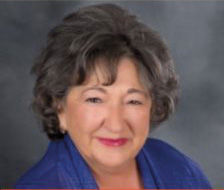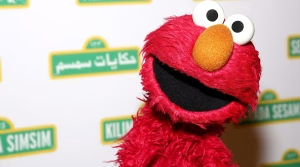Literary arts continue to flourish in St. Louis
Published December 6, 2018
Recently I had a morning filled with culture, starting with a stop at the Eugene Field Museum in downtown St. Louis. In March 2007 the Eugene Field House was designated as a National Historic Landmark by Interior Secretary Dirk Kempthorne.
Eugene Field was best known for his children’s poetry and humorous essays. I think of the light-hearted “Wynken, Blyken, and Nod.” The museum has a library filled with Field’s works and has special exhibitions and a wonderful collection of antique toys.
From the museum, I traveled to the Central West End to Project+ Gallery, an affiliate of Barrett Barrera Projects, and met with the new Associate Director of Curatorial and Program Development, Jessica Baran. She is a curator, art writer and poet who has authored three poetry collections and whose poems and art criticism have appeared in numerous journals and anthologies. In 2013, she received Lost Roads Press’ first Besmilr Brigham Women Writers Award for her book, “Equivalents.” She currently serves as a lecturer at Washington University and teaches in St. Louis University’s Prison Arts and Education program. She also co-curates the 100 Boots Poetry Series at the Pulitzer Arts Foundation; the list and accolades go on.
I asked Baran to comment on St. Louis’ literary community and she said, “St. Louis’ literary community is unique in that its quality is matched equally by its accessibility. An astonishing number of exceptional writers live and work here, which is not a readily known fact by the broader national public. Everyone from established writers like Mary Jo Bang and Carl Phillips, to emerging ones like Nathaniel Farell, Eric Lundgren, Stephanie Schlaifer and beyond. The list is lengthy and includes all of poetry, fiction and nonfiction; experimental and realist approaches; and the cultivation of remarkable, author-run small presses.”
I’ve never found such an inviting and vigorous literary culture. Kevin Nance wrote an article for “Poets and Writers” titled “Late December’s New Beginning.” He says, “Literary journals come and go, and once they go, they almost never come back. But December, a magazine founded in 1958 by students at the Iowa Writers Workshop that published early work by a generation of important writers including Donald Justice, Phillip Levin and Joyce Carol Oats, has been resurrected after nearly three decades on the literary scrap heap.”
Of course, St. Louis’ own Gianna Jacobson (a former board president of the Jewish Light) is the person who revived the journal, which includes poetry, prose and visual art by new writers and artists as well as many of its original contributors. “In fiction and nonfiction, I’m looking for that exceptional balance of compelling language and a great story,” says Jacobson. “I’m not willing to take a beautifully written piece of work that doesn’t tell an interesting story or a compelling story that isn’t beautifully told.”
And St. Louis’ nationally awarded Jan Greenberg has recently published “Meet Cindy Sherman, Photographer, Artist, Chameleon.” Greenberg says, “St. Louis has an amazing literary history of strong female writers. Think of ‘The Awakening’ (1899) by Kate Chopin, certainly one of the first novels in American literature to explore women’s issues. Think of ‘I Know Why the Caged Bird Sings’ by Pulitzer Prize winning author, Maya Angelou. Think of Pat McKissack, whose books about the African American experience received the highest honors in children’s literature. I’m proud to be a part of this great tradition.”
You may be a scholar or a neophyte or somewhere in between and partake of the services of the St. Louis Poetry Center. Not only does the center have readings of locally and nationally acclaimed artists, it has excellent educational programs for all ages. It’s truly not a snobby group. Its goal is to promote poetry for all to hear and enjoy. You might find yourself reciting your own poem after taking a workshop at the center.
Folks often think of “River Styx” an organization that publishes poetry and hosts a reading series, but it also offers much more and crosses boundaries to offer programs, which include music and the visual arts.
The organization has published works of Nobel Prize winner Derek Wolcott and other Pulitzer Prize winners, and works by the late national poet laureates, Mona Van Dyn and Howard Nemerov. And of course, one of the founders of “River Styx,” Michael Castro, St. Louis’ first poet laureate, was referred to by Charles Guenther of the Post-Dispatch as a legend in St. Louis poetry. Castro has been publishing continuously since the early 1970s and has won honors and awards both nationally and internationally. Let’s also not forget our beloved Eugene Redmond, poet laureate of East St. Louis, who recently gave an incredibly moving reading at the Missouri History Museum.
The St. Louis Shakespeare Festival continues to present stellar performances in Forest Park every summer and Carrie Houk, St. Louis’ premier acting coach and casting agent and founder of the Tennessee Williams Festival, tells us to look forward to the third season of the festival this May.
St. Louis is a very literary city and can hold its head high.















